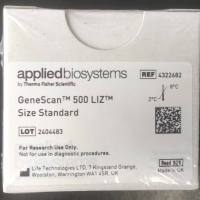Fluorescence PCR and GeneScan Analysis for the Detection of CAG Repeat Expansions Associated with Huntingtons Disease
互联网
520
Huntington’s Disease (HD) is an autosomal dominant neurodegenerative disorder with an incidence of 1/10,000. The disease is characterized by involuntary choreic movements, psychiatric disorders, dementia, and death within 15-20 years. When the HD gene was cloned in 1993, it was discovered that the causative mutation was an expansion of a CAG trinucleotide repeat (1 ) and to date HD is one of 14 trinucleotide repeat diseases (2 ). The expanded CAG sequence in exon 1 of the HD gene, IT15 , likewise encodes an expanded polyglutamine tract resulting in an aberrant huntingtin protein, which leads to neuronal specific death predominantly within the neostratum (3 ). Huntington is widely expressed in both the brain and nonneural tissues (4 ) and interestingly, N-terminal fragments of huntingtin, containing the elongated polyglutamine residues form aggregates, and can be visualized as cytoplasmic and nuclear inclusions (5 ).









